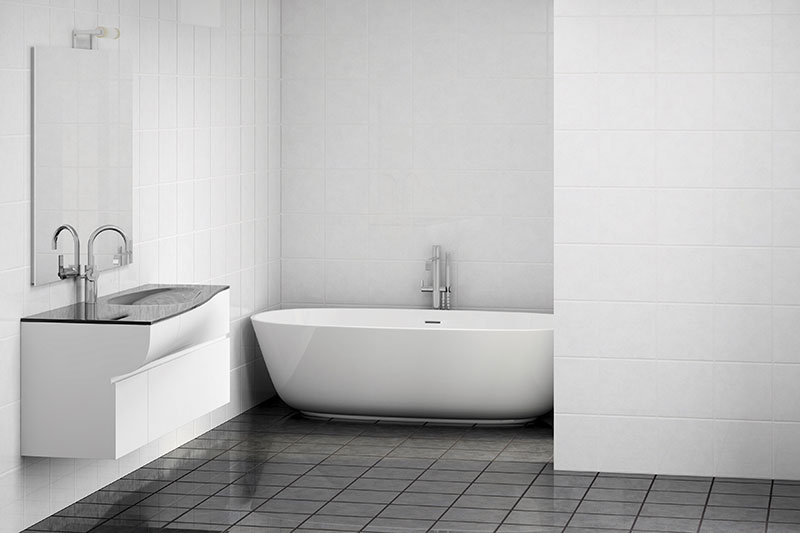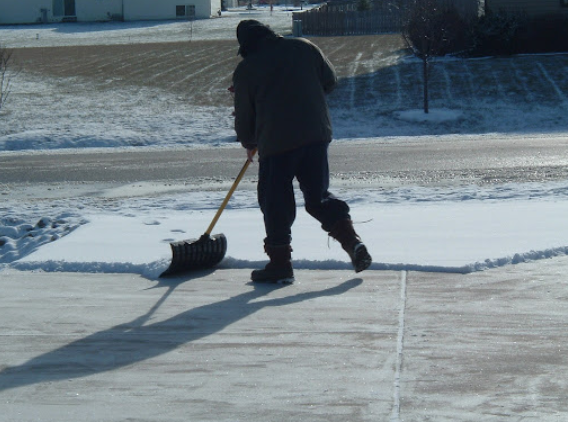
Winter is a season loved by many for so many reasons—–until snow covers your driveway and walkway. The snow and ice collects on these surfaces and forms a slick and slippery hazard that has to be removed.
Shovels, snow blowers, and salt are the traditional way of clearing snow, but all options take time out of your day and leave you feeling cold.
This is where heated driveways and snow melting systems come in!
Here’s what you need to know.
How Much Do Heated Driveways Cost?
The costs of heated driveways are impacted by several different factors. First, there is the overall cost of the driveway itself, and then you have the other components, which include:
- The Cost of the Heated Driveway System
- The Installation Costs
- The Operating Costs
However, these factors listed above can change depending on the following:
- Size of the Driveway
- Type of System you Install
- How Often you use the Heated Driveway
Types of Driveway Heating Systems
For heated driveway systems, there are two main types of heating systems: hydronic and electric. Both systems produce heat the same way but have their own advantages.
Electric Radiant Heating
Electric heated driveways are made of thin electrically-heated snow melting cables, which are the source of the heat. They are easier and less expensive to install and don’t require any other equipment besides a controller. It is connected to your home’s source of electricity—through traditional electricity or solar power
Heating Mats
Another electrical heating option for driveways consisting of electrically-heated driveway mats, which provide a quick solution that doesn’t require a new driveway. This more affordable option sits on top of your driveway’s surface but doesn’t cover the entire driveway and has to be stored when not in use.
Hydronic Heated Driveways
Hydronic heated driveway systems use a mixture of water and antifreeze to create heat.
They have a boiler and pump that heat the water and push it through the system’s tubing to heat the driveway. Boilers can be electric, gas, or propane-powered, which gives you more options.
However, these systems are more expensive and require regular maintenance. Not to mention, many areas of the country have bans on the use of glycol, or antifreeze, which is used to keep the water in hydronic systems from freezing over.
While they can be highly effective, there is also a chance that, in freezing weather, the water running through the tubing can cool off, resulting in spots where snow didn’t melt away.
Which Type of Driveway is Best for Costs?
When deciding about heated driveway types, the most important thing to consider is how much you’re willing to spend. A heated driveway is an investment and many factors affect the cost to install a heated driveway.
For a 1,000 sq ft driveway, many would argue that a hydronic system would be best, but it does have drawbacks. For it to be fully effective, it must run continuously throughout the season to keep the snow and ice away, which will add up quickly.
Primary Factors that Influence Heated Driveway Cost
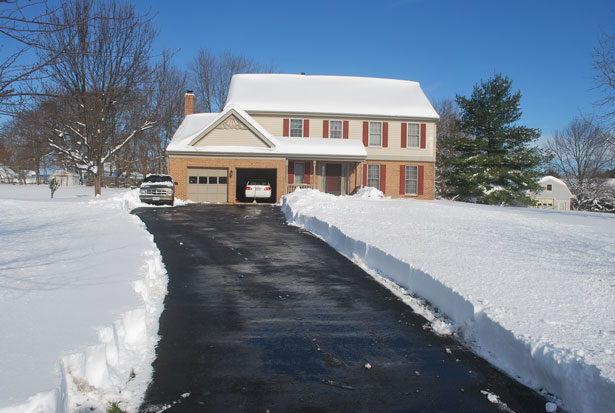
There are a variety of different factors that can influence the cost of heated driveways. For instance:
Type and Size
The type and size of your heated driveway is a major factor in the overall cost. Typically, hydronically heated systems and larger driveways are more expensive
Interested in getting a quote? You can get a quote for a driveway heating system from Warmup today!
Automatic vs Manual Controls and Heated Driveway Cost
You also need to consider another aspect: Do you want your heated driveway to start automatically or manually?
Here’s the differences between automatic and manual controls:
Automatic Activation
Automatic activation systems use sensors to detect the outdoor temperature and moisture levels. It uses the weather readings for the area to keep track of conditions so that when these sensors pick up on conditions ideal for snow and ice, they can activate automatically and preheat a few hours ahead of the bad weather.
While it will have a higher initial cost, it makes for a more efficient use of the system. It can also help reduce how much a heated driveway costs to run, as the system will turn on and off on its own.
Manual Activation
Manual activation systems don’t have such a significant effect on your heated driveway price. With these systems, you must turn it on yourself using a switch, timer, or remote control.
Operation is simple, and you have greater control. However, it also means you have to stay on top of the weather and remember to activate early so it has time to heat up before the snow or ice arrives. If you don’t, snow and ice will accumulate, making the removal slower. You also have to remember to turn it off; otherwise, you’ll end up with a higher energy usage.
Labor Costs
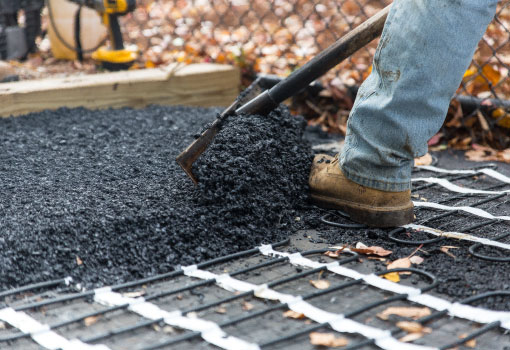
Labor costs can vary greatly depending on where you live, the installer’s experience, the system you choose, and the size of your driveway. Specialty work is also required for both types of systems. For electric radiant heating, you need an electrician to wire the system and install new circuits. This will later add to the overall heated driveway costs
Surface Materials
Both types of heated driveways work with the most common driveway materials: concrete, asphalt, and pavers. Each material has its own costs, which add to the overall heated driveway cost.
How Much Does it Cost to Run a Heated Driveway?
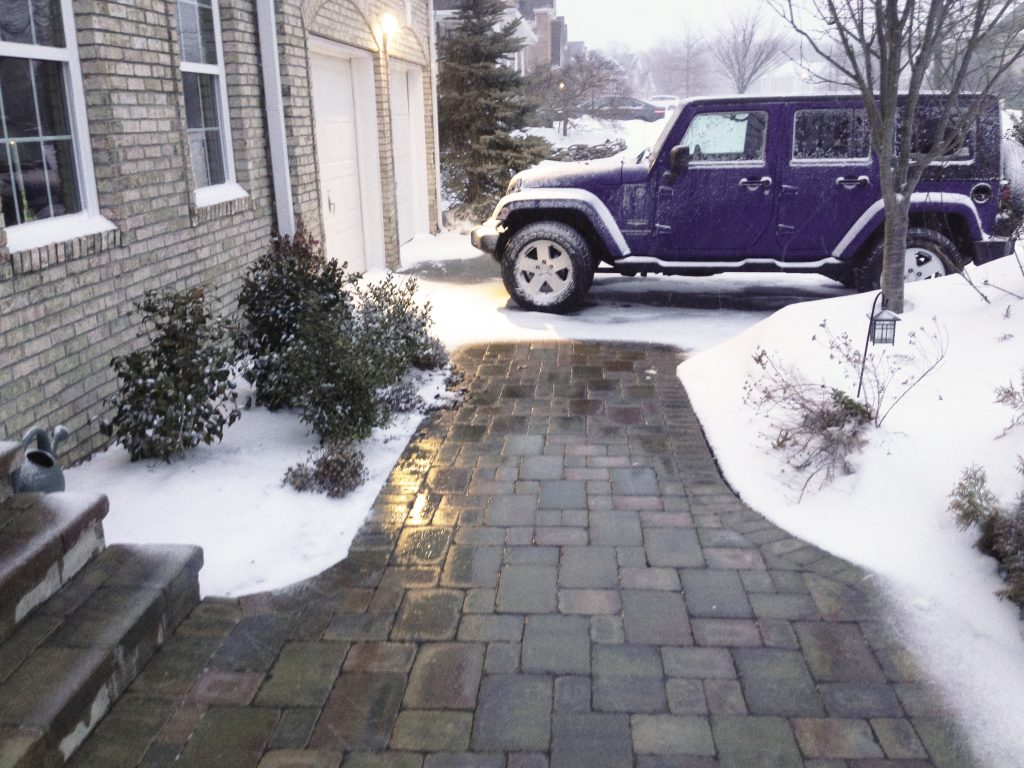
Similar to the costs of a heated driveway, the costs of running a heated driveway are running heated driveways is dependent on a few factors, which include:
- The System you Choose: Hydronic heating typically cost more
- Size of your Driveway: Heated driveway cost is per sq ft with most installers.
- Installation and Labor: Professionals labor prices can vary greatly.
- Automatic vs Manual Activation: Automatic typically costs more.
- Material Costs: Heated driveways work with materials like asphalt, concrete, and pavers, and the material costs vary greatly
Electric Driveway Running Costs
The cost to run a heated driveway also depends on the cost of energy in your area, and the source of that energy—whether that be electricity, wind, or solar.
Hydronic Driveway Running Cost
For hydronic heated driveway, the running costs are also impacted by the system’s size, power source, and energy costs in your area. But generally speaking, these costs can vary because electricity, natural gas, and propane prices are all different.
Other Factors that Affect the Cost of Heated Driveways
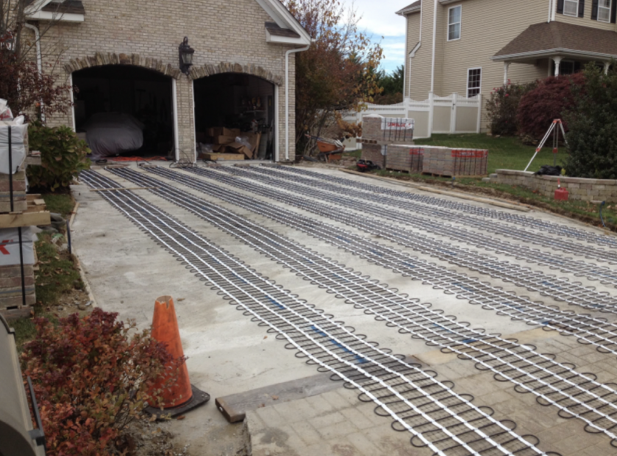
While there are the expected costs for a heated driveway, there are also ones you may not have considered that can really affect the overall heated driveway costs. For instance:
Obstructions
Large rocks or other immovable objects can make work difficult. Workers must take the time to break down rocks and roots, which adds to their workload and increases their overall price. The system will be installed around immovable objects, which can lessen your costs.
Driveway Path
Driveways aren’t always straight; sometimes, they are curved, which requires more work and materials. This will add to your overall heated driveway cost in terms of labor and materials.
Secondary Power Sources
Electrically-heated driveways require an electrical panel large enough to support the system without tripping the rest of the house. If the existing panel isn’t suitable, you must upgrade or install a secondary panel to support the heating system.
Installation Methods for Heated Driveways
With heated driveways, you have a few options:
- Do a Two-Part Pour: Pour one layer of concrete or asphalt, lay your mat down, and then pour a second layer on top.
- Start from Scratch: Tear up your existing driveway and install the heating mats at the appropriate height.
During an installation with heated driveway mats, you can install using both methods. However,
With traditional driveway heating systems, you will need to start from scratch, which requires a lot more labor and, therefore, installation costs.
Activation Method
Regardless of the type of system you choose, it can be activated in one of three ways:
- Via a Wi-Fi Controller: This option allows you to set the system up to “preheat” before it snows.
- Via Special Sensors: Another option is to activate the system using special sensors that detect moisture and temperature levels. This method requires you to set a “desired probability” for snow and relies on your local weather forecast. If the snow forecast hits that probability, the system will activate a few hours before snowfall to be ready.
- Manual: Using manual mode means that you will turn the system on and off as you desire, which means you’d have to keep track of the weather forecast.
Each of these options can significantly impact the overall costs associated with your heated driveway—whether it be initially or over the course of time.
So, Are Heated Driveways Worth it?
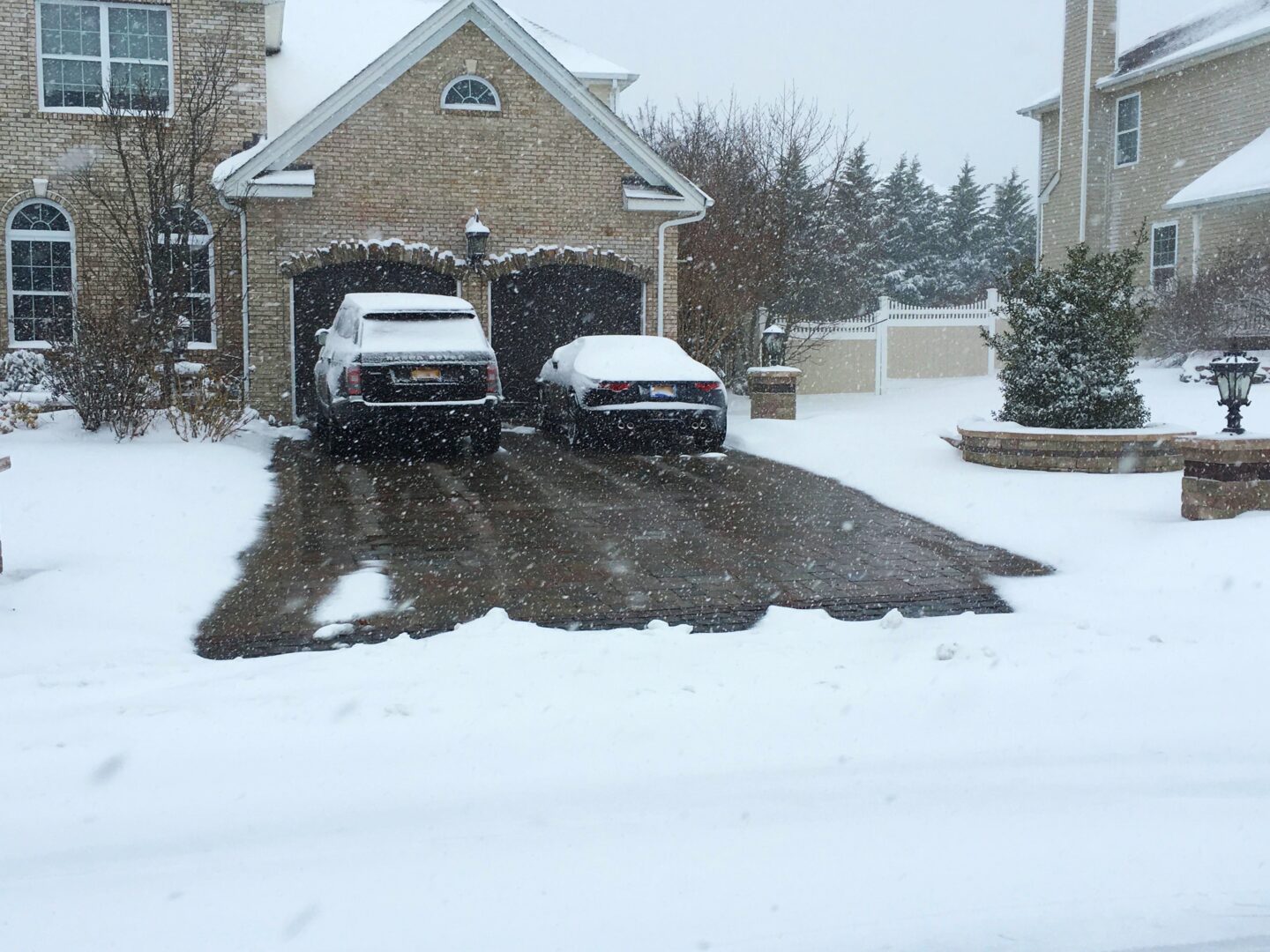
Determining if a heated driveway is worth the investment comes down to your own opinion. No matter what system you choose, it is an investment.
Consider the weather in your area:
- How much snow do you get?
- How much time or money goes into clearing your driveway?
While that seems like a little in the long run, it can add up over the years, and while the heated driveway installation costs will be, at least, a couple thousand dollars upfront, once it’s installed, you no longer have to worry about paying for snow removal services.
It can even lower your homeowners’ insurance premium and increase your home’s value—and that’s one of the best benefits of all.
Not ready to install an entire heated driveway? Consider installing a heated walkway or patio to reduce fear of slipping or sliding.
Frequently Asked Questions
How Does a Heated Driveway Work Exactly?
Heated driveways are lined with electrical heating wires or tubing, which warm and heat the driveway surface.
Through a combination of thermal energy and electromagnetic waves, the heat radiates upward and out, heating objects they come into contact with and melting snow and ice in the process.
Do driveway heating systems work with gravel driveways?
No, a heated driveway shouldn’t be installed under gravel. Gravel doesn’t retain heat and can’t evenly distribute it, which leads to uneven melting. It is also a loose material, making installation difficult and damaging the system in the long run.
Does a heated driveway need insulation?
While you don’t need to install a heated driveway system with insulation, it is a good idea. And here’s why:
Insulating your driveway helps reduce heat loss and ensure more heat goes up. But overall, it will make your system more effective and energy-efficient, ultimately reducing your energy usage.
What is the best option for insulating a heated driveway?
It is always best to consult your contractor and the recommendations from the system manufacturer. Many recommend 1″ to 2″ thick rigid polystyrene foam for the most effective insulation.
How quickly do heated driveways heat up?
Heart-up varies depending on the system, air and ground temperatures, the thickness of the surface, insulation, etc. A hydronic system typically takes 30 minutes to an hour to heat up, while electric systems heat up in 15 to 30 minutes.
How quickly will the snow melt?
If a heated driveway is turned on early enough, the snow will melt immediately. However, if you turn it on after snow has already started falling, it may take more time.
If you feel that snow isn’t melting as it should, it is important to contact the heated driveway company so they can help you troubleshoot and find the problem so they can fix it quickly.
Eliminate Snowy Driveways With Warmup’s Heated Driveways
As beautiful as snow can be, nobody wants it in their driveways causing damage and making more work. While you can’t wish it away, you can melt it and keep your driveway snow and ice-free without lifting a finger by using a heated driveway.
These systems give you more time to do other things and protect your driveway and car from the damaging effects of snow and ice. Your family is also safer, with no worries of slipping and falling on slick surfaces caused by snowy weather.
With over 25 years of experience, Warmup is a trusted manufacturer and an expert in radiant heating.
Contact our Warmup experts today to learn more about our heated driveway system and get an estimate for your driveway.



